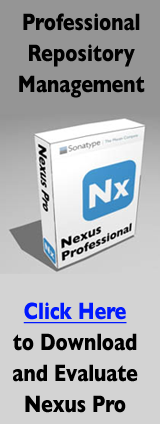Maven is a build tool, a project management tool, an abstract container for running build tasks. It is a tool that has shown itself indispensable for projects that graduate beyond the simple and need to start finding consistent ways to manage and build large collections of interdependent modules and libraries which make use of tens or hundreds of third-party components. It is a tool that has removed much of the burden of 3rd party dependency management from the daily work schedule of millions of engineers, and it has enabled many organizations to evolve beyond the toil and struggle of build management into a new phase where the effort required to build and maintain software is no longer a limiting factor in software design.
This work is the first attempt at a comprehensive title on Maven. It builds upon the combined experience and work of the authors of all previous Maven titles, and you should view it not as a finished work but a the first edition in a long line of updates to follow. While Maven has been around for a few years, the authors of this book believe that it has just begun to deliver on the audacious promises it makes. The authors, and company behind this book, Sonatype, believe that the publishing of this book marks the beginning of a new phase of innovation and development surrounding Maven and the software ecosystem that surrounds it.
Pick it up, read some of the text on the pages. Once you reach the end of a page, you'll want to either click on a link if you are looking at the HTML version, or, if you have the printed book, you'll lift up a corner of a page and turn it. If you are sitting next to a computer, you can type in some of the examples and try to follow along. Please don't throw a book this large at anyone in anger.
This book is divided into three parts: Introductory Material, Part I, “Maven实战”, and Part II, “Maven Reference”. The introductory material consists of two chapters: Chapter 1, 介绍 Apache Maven and Chapter 2, 安装和运行Maven. Part I, “Maven实战” introduces Maven by developing some real examples and walking you through the structure of those examples providing motivation and explanation along the way. If you are new to Maven, start with Part I, “Maven实战”. Part II, “Maven Reference” is less introduction than reference, each chapter in Part II, “Maven Reference” deals with a focused topic and dives into as much detail as possible about each topic. For example, the Chapter 17, 编写插件 chapter in Part II, “Maven Reference” deals with writing plugins by providing a few examples and a series of lists and tables.
While both Part I, “Maven实战” and Part II, “Maven Reference” provide explanation, each part takes a different strategy. Where Part I, “Maven实战” focuses on the context of a Maven project, Part II, “Maven Reference” focuses on a single topic. You can skip around in the book, Part I, “Maven实战” is by no means a prerequisite for Part II, “Maven Reference”, but you'll have a better appreciation for Part II, “Maven Reference” if you read through Part I, “Maven实战”. Maven is best learned by example, but once you've gone through the examples, you are going to need a good reference to start customizing Maven for your own environment.

